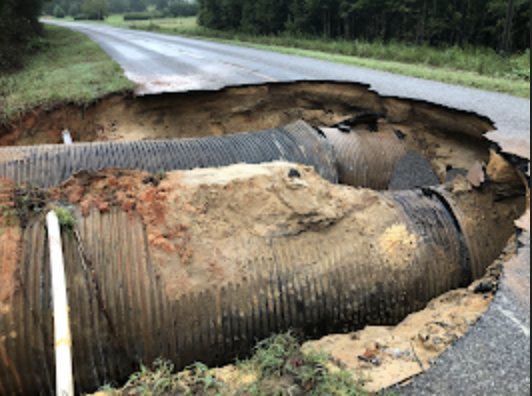Fighting mold and mildew
Published 12:00 am Wednesday, August 20, 2003
Summers here are always humid, but we've certainly had an unusually rainy one.
Even if you do not usually have problems with mildew, you may have found some in your home lately.
Molds are fungi and certain molds produce mildew, which usually appears as a thin black or greenish growth.
You may also notice a musty odor.
Mildew-causing molds flourish wherever it is damp, warm, poorly lighted or poorly ventilated.
If not stopped, mildew can cause considerable damage to furniture, fabrics, and wall coverings.
There are several key steps to preventing the growth of molds and mildew.
First, keep mildew-prone areas as clean as possible.
Soil or a dirty article can supply enough food for mildew to grow once other conditions are right.
Next, get rid of dampness.
Dampness in basements or other structures is caused when moisture from humid air condenses onto cooler surfaces.
You might need to paint your foundation or basement with a water proof paint.
If your house has a crawl space, a layer of polyethylene film covering the ground under the house will help.
Make sure water drains away from the house and make sure your gutters are clean.
Vent your clothes dryer to the outside, not under the house.
Dry the air inside the house.
Air conditioners and dehumidifiers remove excess moisture from the air.
Keep doors and windows closed if using either of these.
You can also get rid of dampness by heating the house for a short time, then opening windows and doors to let the moisture-laden air escape.
Good air circulation is another important key to keeping mold at bay.
When the air outside is drier than that inside, ventilation allows dry air to enter, take up excess moisture, then be carried outside.
If natural breezes don't do the job, you can use electric fans placed in windows, set in a wall or ducted to the attic to keep air moving through the house.
In areas of your home prone to mildew, keep furniture away from outside walls.
Move your furniture around once in a while.
Houseplants contribute to the humidity, so if it's already humid, don't keep a lot of plants in the house.
Check the drip pan under the refrigerator and keep it emptied.
Store clothes and towels clean and drydon't let them stay damp in the laundry basket or the washing machine.
Wipe down shower walls with a towel or squeegee after bathing or showering.
If you discover wet carpeting, cardboard boxes, insulation or other things that have been very wet for more than two day, throw them away.
Check your closets, especially those in rooms seldom used.
Poorly ventilated closets are excellent breeding grounds for mold in continued wet weather.
Improve air circulation by opening closet doors or using a fan.
Sometimes, leaving a closet light on continuously will generate enough heat to evaporate moisture.
And clean out your closets so that clothes can hang loosely; don't overcrowd the closet.
This will do a lot to improve air circulation around the clothes.
Install and use exhaust fans in the kitchen, laundry area and bathrooms.
They should be vented outside, not into the attic.
Common chores and bathing can add two gallons of water a day to a house unless it has adequate ventilation.
If you have mildew stains on fabrics or other items in your home, it is important to clean them as soon as you discover the problem.
The correct method for removing mildew depends on what the item is made of. For specific help on removing mildew, contact us at the Extension Office.
Our phone number is 382-5111.


